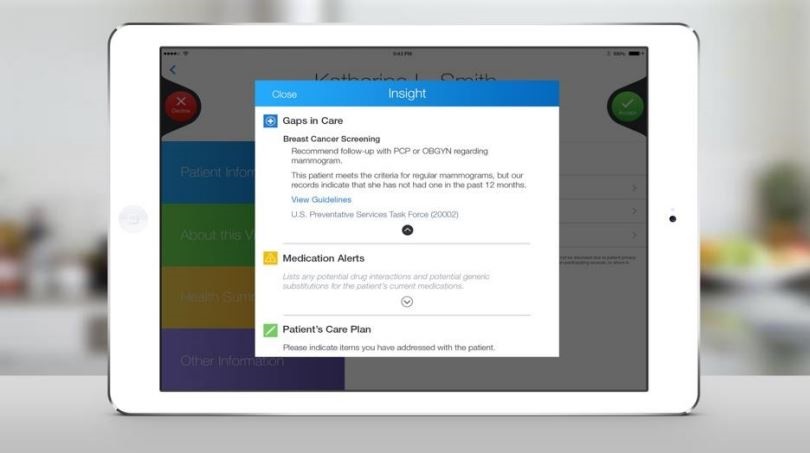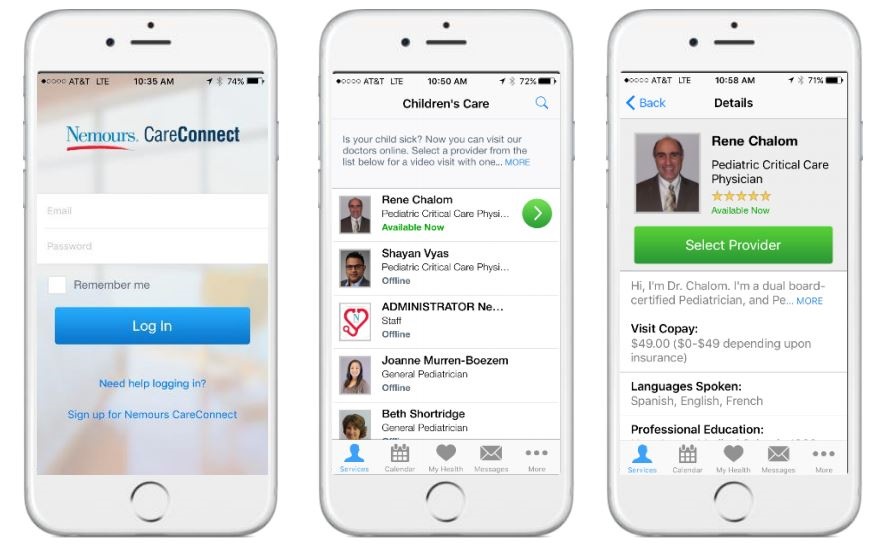Nemours Children's Health System — a nonprofit children's health system based in Jacksonville, Fla., with locations in Delaware, Florida, Georgia, New Jersey and Pennsylvania — adopted telemedicine in 2014 and became the first pediatric health system to deliver direct-to-consumer telehealth. Since launching Nemours CareConnect, we have implemented telemedicine throughout our health system with direct-to-consumer care for acute, chronic and post-surgical appointments, as well as for clinical trial assessments. We also deliver telehealth to collaborating hospitals, schools and cruise ships, and use Nemours CareConnect to bring pediatric specialists into affiliated community hospitals as well as Nemours and non-Nemours primary care physicians to remotely assess patients.
This content is sponsored by American Well
If there is one piece of advice I could share with health systems looking to implement a direct-to-consumer telehealth solution of their own, it's to create a roadmap that includes EHR integration.
Over 95 percent of hospitals have a certified EHR in place today, according to a 2016 report from The Office of the National Coordinator for Health Information Technology. The benefits of EHRs are incontestable — better continuity of care, lower drug interaction rates, decreased mortality rates among the chronically ill, less room for error, better physician communication, lower costs — which is why health systems continue to invest heavily in these systems.
Consumerism is also changing the way healthcare is being delivered, and patients now value convenience as much as quality and cost. This is a large reason why health systems like Nemours invest in telehealth platforms, providing patients with the same high-quality care at a lower cost.
Health systems, however, find that they have two different IT systems working alongside each other, but not necessarily communicating with one another. When we first launched CareConnect at Nemours, we did so without integrating the system with our system of record. While we were quick to realize the power and significance of telehealth, the lack of EHR integration remained a missing component of the care delivery model.

In 2016, we integrated CareConnect with our Epic system, and by doing so, discovered that this type of integration allowed us to deliver more complete, effective care to our patients, while streamlining our provider workflows.
Why integration matters
Telehealth can and does provide valuable care to patients without EHR integration; providers are able to conveniently see patients over video, collect appropriate medical history before the visit and safely prescribe the appropriate medication if necessary. More patients get access to care with this type of telehealth and that's important for increasing accessibility to care. But, when you decide to move beyond urgent care encounters — just as Nemours did after launch — EHR integration can improve physician workflows and continuity of care for the patient.
When Nemours began to look at other use cases, we found that as our use cases grew, our physicians' ability to treat their patients improved when they had integrated access to patients' medical records. Having CareConnect integrated with our EHR brought appropriate information right into the visit, enhancing the provider workflow while simultaneously making it easier for physicians to deliver better care to patients. Since launching with American Well, Nemours has expanded our telehealth services to include clinical research and added nonphysician healthcare providers such as nutritionists and therapists. Nemours' physician researchers are currently using EHR-integrated telehealth to access and care for patients with spinal muscular atrophy and pediatric obesity, just to name a few of our leading use cases.
Why not use EHRs for telehealth?
It's certainly a question that many health systems face, particularly when your EHR is offering some form of telehealth visits. Nemours itself has made a significant investment in our Epic system. In 2015 when we vetted telehealth vendors, we had to decide whether we were going to use our system of record for telehealth or look outside our EHR at other telehealth vendors. Our decision to go with American Well hinged on many factors, and their experience with EHR integration, combined with their strong emphasis on the patient experience, was a driving factor.
American Well's mobile and web-facing properties to bring patients in from any modality and from anywhere was very appealing. We also felt that our EHR system of record would only have a captive audience with our existing patients, whereas American Well had the infrastructure in place to reach out to a general population of people to better grow our telehealth platform. Additionally, American Well's platform had been built for telehealth, with a brokerage engine for managing supply and demand, eligibility and claims integration and the ability to connect providers with other providers for consults.

Enhancing the provider workflow
Physician adoption of telehealth is one of the keys to successful telehealth for any health system. Health systems need provider champions on board to spread the word to other physicians and make the experience as positive as possible for providers. To encourage physician adoption of telehealth, Nemours wanted to streamline the telehealth provider workflow; one way to do that was through EHR integration. Since integrating our Epic system with CareConnect, Nemours has seen an increase in physician adoption of telehealth. Below is an example of how seamless the provider workflow is with integration in place:
An integrated telehealth experience allows the physician to practice solely within the telehealth platform. Once logged in to the platform, the physician can see incoming patient requests and patients in the virtual waiting room. Before the video portion of the visit, the physician can view the patient's medical record, which has been pulled into the platform from the EHR. During the visit, the physician documents directly within the telehealth platform, and once the visit is complete, a visit summary is sent from the telehealth platform to the EHR. Both systems communicate with one another through a bidirectional integration workflow, and the physician only needs to work within one platform.
Delivering better care
With the physician workflow streamlined, doctors can provide their patients with more complete, effective care. Physicians have the patient's medical record right within the platform they're treating the patient on, allowing them to spend more time talking to and treating the patient.
Patients typically don't notice a difference in their telehealth visit until the end of the visit, when they can access and view the telehealth visit summary within their patient portal. Without integration, the patient could only view the telehealth visit summary within the telehealth platform, separate from the rest of their medical history.
Integrating our Epic system with Nemours CareConnect has also helped improve how primary care is organized and delivered to the patient's medical home. Many of Nemours' telehealth visits in the five states we serve — Florida, Delaware, Pennsylvania, Maryland and New Jersey — occur outside the patient's medical home for either research, specialty care or urgent care. Nemours CareConnect offers an integrated approach where our visit details and results are shared electronically with the patient's primary care physician and their Pediatric Medical home.
Improving data collection
From a reporting and analytics perspective, anything that is documented outside a health system's EHR system is difficult to track. This is especially true for reporting and billing reconciliations for all commercial payers as well as Medicare and Medicaid. If the telehealth encounter is integrated within the EHR, this facilitates data collection and billing for the health system.
This also becomes more important when use cases expand beyond urgent care to conditions that require better continuity of care, as ours have. Being able to collect data within the EHR for long-term telehealth outcomes will make payment and billing easier for healthcare organizations, payers and providers. Nemours has expanded telehealth to pediatric obesity treatment, asthma management and clinical trials. Managing patient information within the EHR is critical for proper treatment with these clinical applications.
Strategies for implementation
Nemours decided to launch telehealth first and implement the EHR integration later. This approach gave us time to learn about our telehealth platform — what was working and what wasn't working — and develop a more robust telehealth strategy. It also allowed us time to market internally and gain physician buy-in within our health system.
Outside of the technical decision-making process, there are other considerations that come into play in order to get a telehealth program off the ground — areas like marketing, naming the service and configuring the platform workflow. Making the foundational decisions first before moving into the integration process will put your health system in a better position to meet the overall goals set for your telehealth service.
Keeping goals in mind: telehealth for improved care delivery
At Nemours, we found that implementing telehealth is an intricate process with a lot of moving parts. For your implementation to be successful, you should make a commitment to making it part of the way you deliver care — and EHR integration should be a key part of your roadmap to long-term telehealth success.

